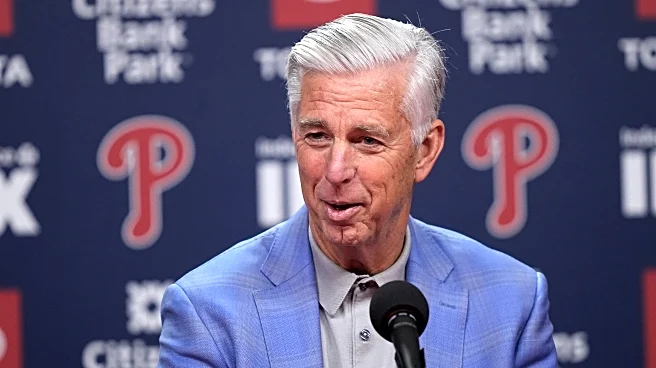What's Happening?
Nick Castellanos' tenure with the Philadelphia Phillies is likely coming to an end, as the team considers trading or releasing him during the offseason. Castellanos, who signed a five-year, $100 million
contract with the Phillies in 2022, has struggled to fit into the team's lineup due to his bat-only skills and the presence of Kyle Schwarber at designated hitter. His declining offensive production and $20 million salary for 2026 make trading him a challenge, as the Phillies may need to absorb a significant portion of his contract to facilitate a deal. The team faces several key decisions this offseason, including the potential free agency of top players like Kyle Schwarber, Ranger Suárez, and J.T. Realmuto.
Why It's Important?
The potential departure of Nick Castellanos from the Phillies could have significant implications for the team's strategy and roster composition. With Castellanos' contract taking up substantial financial resources, freeing up this space could allow the Phillies to pursue other players or retain key free agents. The decision also reflects the broader challenges teams face in managing player contracts and balancing financial constraints with performance needs. Castellanos' situation highlights the complexities of player management in MLB, where teams must navigate the trade-offs between talent acquisition and budget limitations.
What's Next?
The Phillies will likely explore options for trading Castellanos, although this may require financial concessions to make a deal viable. If a trade cannot be arranged, releasing Castellanos could be the alternative, allowing the team to focus on retaining other key players. The outcome will depend on market interest and the team's strategic priorities. Additionally, the Phillies' decisions regarding other free agents will shape their roster for the upcoming season, influencing their competitiveness in the National League.
Beyond the Headlines
Castellanos' situation underscores the challenges of player contract management in professional sports, where teams must balance financial commitments with performance outcomes. The case also highlights the importance of strategic planning in roster development, as teams seek to optimize their lineups while navigating budget constraints. This scenario reflects broader trends in MLB, where financial considerations increasingly influence player transactions and team strategies.












